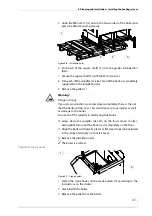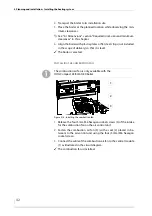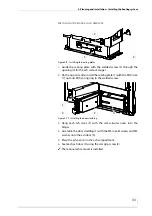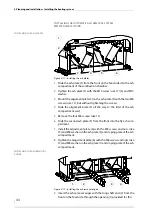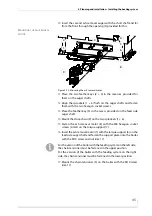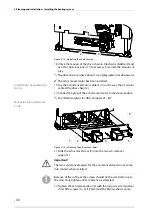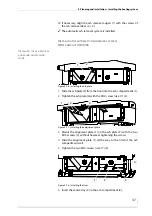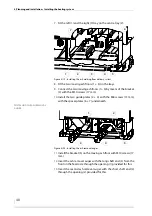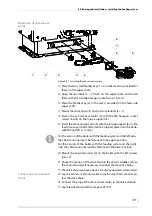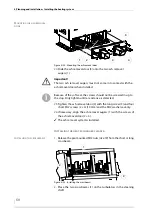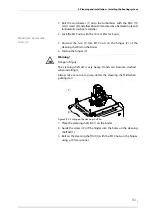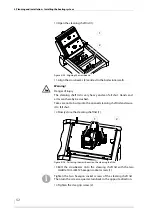
4 Planning and installation – Connections
37
U
SING
AN
ACCUMULATOR
When calculating the thermal requirements of buildings, e.g. ac-
cording to DIN EN 12831 “Method for calculating the normal heating
load”, the lowest outside temperature of the relevant climate zone
(e.g. -15 °C) is used. These conditions only apply a few days per year,
thus, the thermal performance of the heating system is greater than
required on most days when heating is needed. For this reason, the
HDG Compact 25 - 80 is fitted as standard with power control and au-
tomatic ignition.
It is, however, highly recommended to use an accumulator even
with automatic boiler systems.
The size of the accumulator will depend on the nominal thermal
power of the boiler and on the thermal requirements of the building.
As a benchmark value, 20 litres per kilowatt boiler power can be
used. This results in a boiler burning duration of approximately one
hour at full-capacity operation, during which the accumulator is
completely filled. The emptying time of the accumulator at 25 %
nominal load is 3.7 hours for this type of design, with an assumed us-
able temperature difference of 40 Kelvin.
An advantage of using an accumulator lies in the lower operating
hours of the system and fewer start-up phases due to the extension
of the heating intervals. This leads to a reduction in the proportion of
external energy supplied and to lower wear of the mechanical com-
ponents.
One further advantage of the accumulator is in summer operation
when only hot water is required. When operating in this mode, the
accumulator helps avoid frequent ON/OFF switching.
For the above-mentioned reasons we recommend an accumu-
lator, even for automatic boiler systems.
S
AFETY
DEVICES
Safety devices (e.g. boiler safety module, insufficient water cutout,
etc.) must be installed in accordance with DIN EN 12828: 2003 “De-
sign of water-based heating systems in buildings”.
A
CTIVATE
RETURN
TEMPERATURE
Operating temperatures which are too low significantly shorten the
service life of the boiler. Water vapour contained in the flue gas could
be released in the form of condensation if the temperature drops
below the dew point (approx. 50–55 °C), especially in the area around
the water-cooled heat-exchanger surfaces. This condensation, in
combination with combustion residue, can lead to corrosion.
For these reasons, a return temperature control
must
be installed for
the HDG Compact 25 - 80 heating system. The return temperature
control causes the water from the boiler return flow to be mixed with
the water from the boiler supply flow until the minimum return tem-
perature has been reached.
✎
The minimum return temperature is listed in chapter “3 Mode of
operation”, section “3.3 Technical data”.
The control of the return temperature is handled by the HDG Control
control unit.
Antifreeze agents may only be used after prior consultation with
HDG.



















